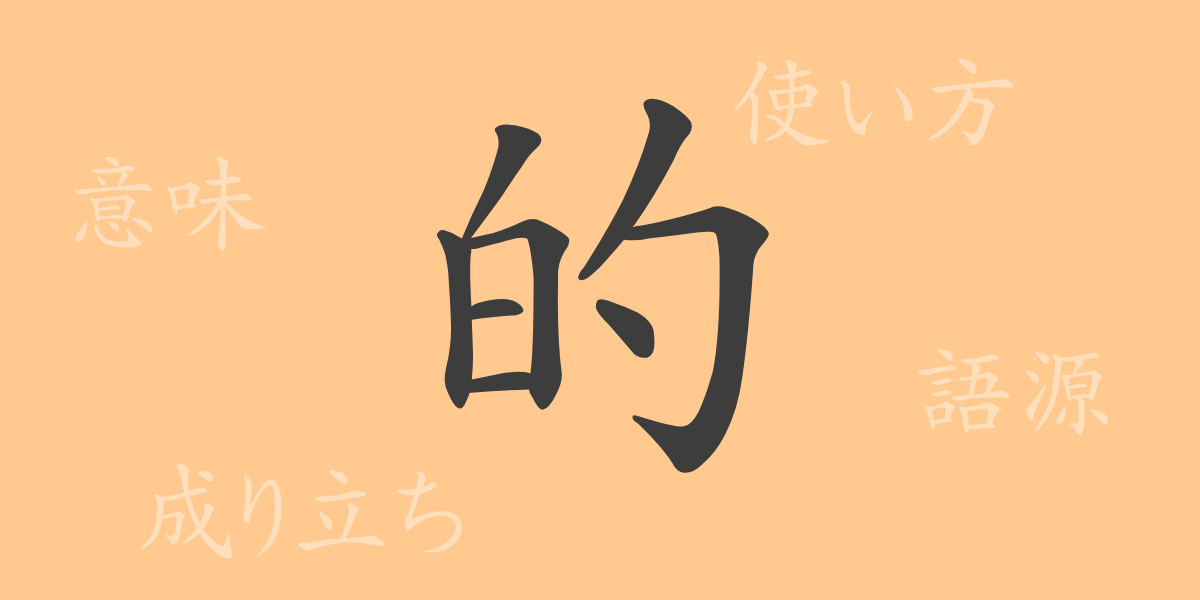The beauty and complexity of Kanji significantly shape Japanese written culture. Among the commonly used Kanji, ‘的(テキ)’ appears frequently in everyday life. This article delves into the etymology, contemporary usage, and influence of ‘的’, offering readers new insights into the multifaceted allure of this character.
Origins of ‘的(テキ)’
The kanji ‘的’ has its origins in ancient Chinese ‘簡体字’ (simplified characters), initially used as a symbol for targets in archery. Over time, it evolved to encompass metaphorical meanings, representing goals or objectives. When kanji were introduced to Japan, ‘的’ was adopted and has since developed various uses in modern Japanese.
Meaning and Usage of ‘的(テキ)’
‘的’ conveys meanings such as ‘target’ or ‘objective’, and is commonly used as a suffix in Japanese to modify adjectives and nouns. For instance, ‘問題的(もんだいてき)’ means ‘related to the problem’, and ‘的確(てっかく)’ translates to ‘accurate’. It is also used in the term ‘目標(もくひょう)’, meaning ‘goal’.
Readings, Stroke Count, and Radical of ‘的(テキ)’
‘的’ is essential for understanding the structure and pronunciation in Japanese:
- Readings: On’yomi (Sino-Japanese reading) is ‘テキ’, kun’yomi (native Japanese reading) is ‘まと’.
- Stroke Count: ‘的’ consists of 8 strokes.
- Radical: Its primary radical is ‘白’, but ‘的’ itself can also function as a radical.
Phrases and Idioms Using ‘的(テキ)’ and Their Meanings
‘的’ is part of many idioms and proverbs that reflect the richness of Japanese expression:
- 一石二鳥(いっせきにちょう) – ‘Killing two birds with one stone’, achieving two benefits with one action.
- 的中(てきちゅう) – Accurately achieving predictions or targets.
- 的外れ(まとはずれ) – Missing the mark, an expression used for inaccurate or irrelevant conclusions.
Conclusion on ‘的(テキ)’
The kanji ‘的’ plays a crucial role in Japanese language through its simple yet powerful visual impact and rich meanings. From its origins to modern usage and expressions in idioms, ‘的’ is indispensable in forming words. It enriches our communication, ensuring precision in conveying messages across both everyday and specialized contexts. Through exploring ‘的’, we appreciate its

























